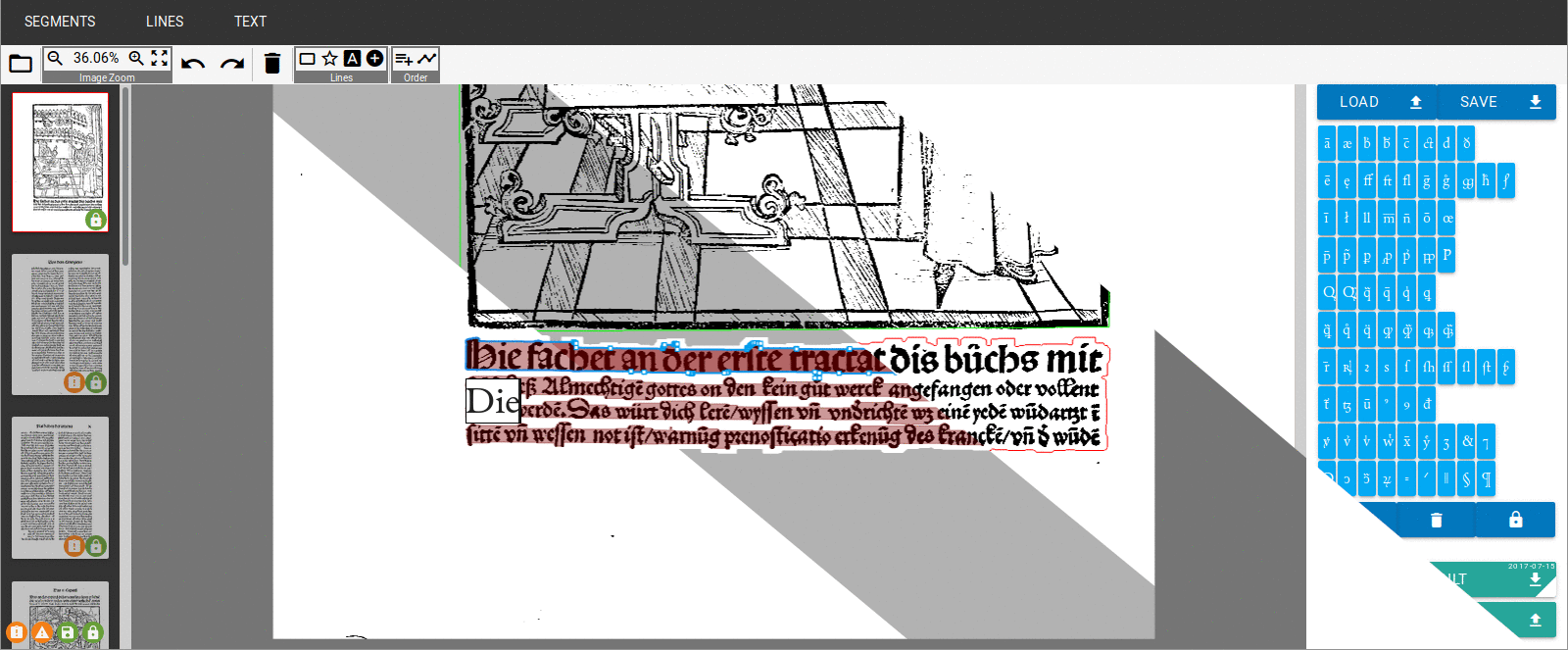Case Study of a highly automated Layout Analysis and OCR of an incunabulum: 'Der Heiligen Leben' (1488)
This paper provides the first thorough documentation of a high quality digitization process applied to an early printed book from the incunabulum period (1450-1500). The entire OCR related workflow including preprocessing, layout analysis and text recognition is illustrated in detail using the example of 'Der Heiligen Leben', printed in Nuremberg in 1488. For each step the required time expenditure was recorded. The character recognition yielded excellent results both on character (97.57%) and word (92.19%) level. Furthermore, a comparison of a highly automated (LAREX) and a manual (Aletheia) method for layout analysis was performed. By considerably automating the segmentation the required human effort was reduced significantly from over 100 hours to less than six hours, resulting in only a slight drop in OCR accuracy. Realistic estimates for the human effort necessary for full text extraction from incunabula can be derived from this study. The printed pages of the complete work together with the OCR result is available online ready to be inspected and downloaded.
PDF Abstract
